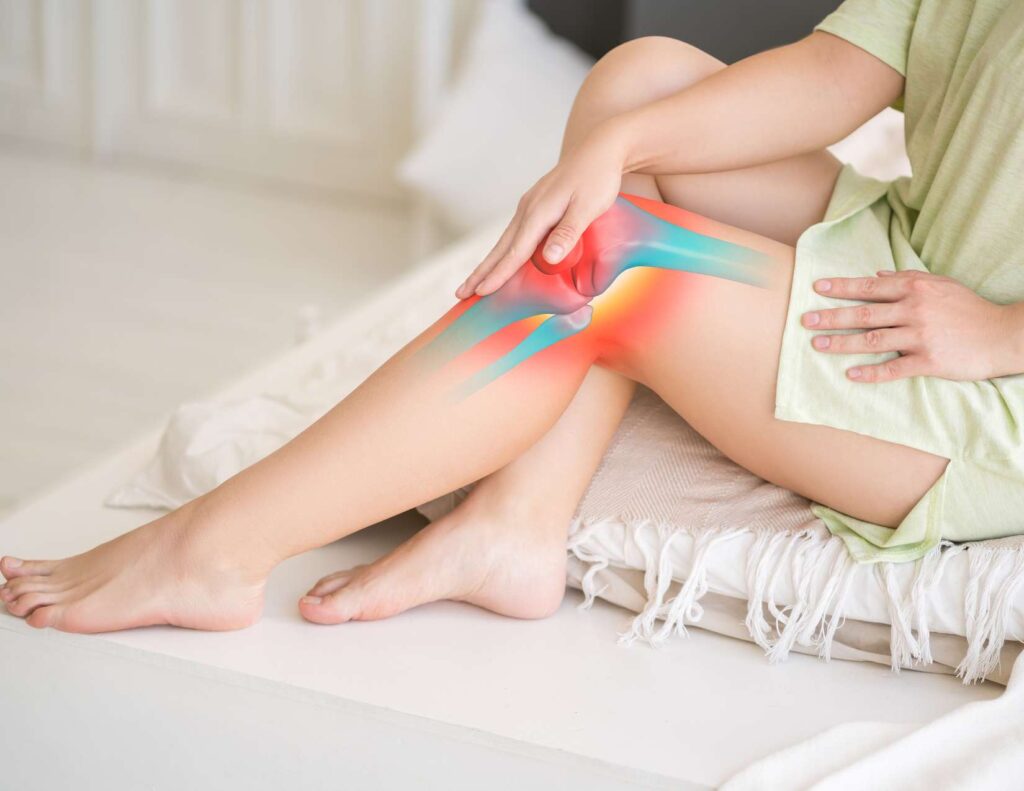The Surprising Connection: Can Sciatica Cause Knee Pain?
While many are aware of sciatica as a common culprit for lower back pain and leg pain, its potential impact on the knee is lesser known. Can sciatica cause knee pain? This article aims to unravel the connection between these two conditions. Delving into the depths of medical research and expert opinions, we will explore this complex relationship. Whether you’re a health enthusiast or someone dealing with these conditions, understanding this connection could be vital to managing your pain and overall well-being. So, are you ready to unveil the mysteries of your body’s internal wiring? Let’s dive in!

Table of Contents
Introduction to sciatica and knee pain
Sciatica and knee pain are two common conditions that can cause significant discomfort and affect our daily lives. Many people may wonder if there is a connection between the two. In this article, we will explore the relationship between sciatica and knee pain, understanding the symptoms, anatomy, common causes, diagnosis, and treatment options. By unraveling this connection, we hope to provide valuable insights into managing these conditions effectively.
Understanding sciatica and its symptoms
Sciatica refers to the pain that radiates along the sciatic nerve, which runs from the lower back, through the buttocks, and down each leg. The most common symptom of sciatica is pain, which can vary from a mild ache to a sharp, shooting sensation. Other symptoms may include numbness, tingling, or weakness in the affected leg or foot.
Exploring the anatomy of the knee and its connection to sciatica
To understand the connection between sciatica and knee pain, it’s important to have a basic understanding of the knee’s anatomy. The knee is a complex joint that consists of bones, ligaments, tendons, and cartilage. The sciatic nerve, originating from the lower spine, travels down the back of your thigh, passing behind the knee, and continues down to the foot. Any disturbance or compression from the nerve root along the sciatic nerve can potentially affect the knee and cause pain.

Common causes of knee pain related to sciatica
Several conditions can lead to knee pain related to sciatica. One common underlying cause is a herniated disc in the lumbar spine. When a disc herniates, it can put pressure on the sciatic nerve, leading to pain that radiates down the leg and may affect the knee.
Another cause is spinal stenosis, where the spinal canal narrows, compressing the nerves, including the sciatic nerve.
Inflammation of the piriformis muscle, known as piriformis syndrome, can also lead to sciatica and knee pain. Here’s how to tell the differences between piriformis syndrome and sciatica. Also, piriformis syndrome is extremely common during pregnancy, so it’s important to be aware of the symptoms and how to treat them.
Additionally, conditions such as spondylolisthesis, spinal tumors, or injury to the lower back can cause similar symptoms.
How can sciatica cause knee pain?
When the sciatic nerve is compressed or irritated, it can result in pain that travels down the back of the leg and potentially affects the knee. The pain may be felt as a dull ache, a burning sensation, or even as sharp, shooting pain. The exact mechanism of how sciatic pain causes knee pain is not fully understood, but it is believed that the inflammation or compression of the nerve “pinched nerve” can disrupt the normal functioning of the muscles and nerves around the knee, leading to pain and discomfort.
Diagnosing sciatica-related knee pain
To accurately diagnose sciatica-induced knee pain, a thorough medical history, physical examination, and diagnostic tests may be necessary. The doctor will inquire about sciatica symptoms, conduct a physical examination to assess the range of motion, strength, and reflexes, and may order imaging tests such as X-rays, MRI, or CT scans to visualize the spinal nerves, spinal cord and identify the underlying condition. It is crucial to undergo proper diagnosis of this medical condition to ensure appropriate treatment and management.
Treatment options for sciatica-induced knee pain
The treatment of sciatica-induced knee pain aims to alleviate symptoms, reduce inflammation, and restore normal function. Initially, conservative treatments such as rest, ice or heat therapy depending on sciatica symptoms, pain medications, and physical therapy may be recommended. Physical therapy can help strengthen the muscles around the knee and improve flexibility, reducing stress on the sciatic nerve.
In severe cases, where conservative treatments fail to provide relief, more invasive options like epidural steroid injections or surgery may be considered. These interventions are typically reserved for cases where there is significant nerve compression or structural abnormalities. Additionally, more specific treatments, such as acupuncture for sciatica and massage therapy in the form of pressure point therapy for sciatica, can be beneficial in providing relief from discomfort.
Sciatica and knee pain at night
Sciatic knee pain can be particularly disruptive, and patients may need to sleep on a firmer mattress or use additional pillows for comfort. These are the best pregnancy pillows for sciatica (even if you’re NOT pregnant!).
The normal curvature of your lower spine can be maintained by using a pillow between your legs when on your side or beneath your knees while sleeping on your back.
You can also invest in supportive orthotics, which help to ensure that the spine remains properly aligned.
Non-steroidal anti-inflammatory drugs (NSAIDs) are also commonly used to reduce pain, but it is important to discuss these medications with your doctor as they may have side effects.

Prevention and self-care tips for managing sciatica and knee pain
Prevention and self-care play a crucial role in managing sciatica and knee pain. Maintaining good posture especially while sitting, practicing regular exercise, and avoiding prolonged sitting or standing can help alleviate irritation of the sciatic nerve and reduce the risk of developing knee pain. Engaging in activities that strengthen the core muscles and promote flexibility can also be beneficial. Additionally, maintaining a healthy weight, avoiding certain foods that are known to worsen sciatica symptoms, avoiding heavy lifting, and using proper body mechanics can reduce the strain on the lower back and minimize the risk of sciatica-induced knee pain.
Sciatic nerve knee pain exercises
Can help improve flexibility, strength, and range of motion. Stretching exercises such as yoga or Pilates are helpful for targeting the muscles in the lower back and legs. Strengthening exercises, such as leg lifts or wall squats, can also be beneficial.
Here are some helpful stretches to try:
1. Hamstring Stretch: Lie on the back and bring one knee up towards the chest. Grasp behind the thigh with both hands and pull gently until a stretch is felt in the back of the thigh and calf. Hold for 30 seconds before switching sides. This is a great stretch for tight hamstrings!
2. Hip Flexor Stretch: Kneel on one knee, keeping your other foot flat on the floor in front of you. Push your hips forward until you feel a stretch in the front of your thigh and hip. Hold for 30 seconds before switching sides.
3. Glute Stretch: Lie on the back with one leg straight up in the air, keeping the other bent at 90 degrees. Reach around to grasp behind your knee and pull your leg towards your chest until a stretch is felt in the buttocks. Hold for 30 seconds before switching sides.
4. Quadriceps Stretch: Lie on one side, keeping the bottom leg bent at 90 degrees and the top leg straight. Reach back to grab behind your ankle and pull up until a stretch is felt in the front of the thigh. Hold for 30 seconds before switching sides.
5. Piriformis Stretch: Lie on your back with both knees bent and feet flat on the ground. Cross one ankle over the opposite thigh, then grasp behind the knee of that same leg and pull it towards your chest until a stretch is felt in the buttocks. Hold for 30 seconds before switching sides.
7. Calf Stretch: Stand facing a wall and place one foot behind you while keeping your heel flat on the ground. Lean into the wall with your hands until a stretch is felt in the calf muscle of the back leg. Hold for 30 seconds before switching sides.
These yoga stretches involve movements that improve flexibility and strength in the lower back, hips, and legs, helping to reduce stress on the sciatic nerve by increasing the spinal mobility and improving posture.

When to seek professional help for sciatica-induced knee pain
While self-care measures may help alleviate mild sciatica-induced knee pain, it is essential to seek professional help if you are in chronic pain or worsens. If the pain becomes severe, affects your mobility, or is accompanied by other concerning symptoms such as bowel or bladder dysfunction, weakness, or numbness in the leg, it is crucial to consult a healthcare professional promptly. They can conduct a thorough evaluation, provide an accurate diagnosis, and recommend appropriate treatment options. They may refer you to a chiropractor for sciatica treatment and/or physical therapist, to tailor to your specific needs.
The importance of recognizing the connection between sciatica and knee pain
So, can sciatica cause knee pain? It seems due to the complex relationship between the sciatic nerve and the knee joint, there is a positive correlation. Understanding the symptoms, anatomy, common causes, diagnosis, and treatment options can help individuals suffering from sciatica-induced knee pain effectively manage their condition. By recognizing the connection between sciatica and knee pain, individuals can seek appropriate medical attention, follow preventive measures, and engage in self-care practices to alleviate discomfort and improve their quality of life.
Remember, if you are experiencing severe pain or worsening knee pain related to sciatica, it is crucial to consult a healthcare professional for an accurate diagnosis and personalized treatment plan. Don’t let sciatica-induced knee pain hold you back from enjoying an active and pain-free life!






